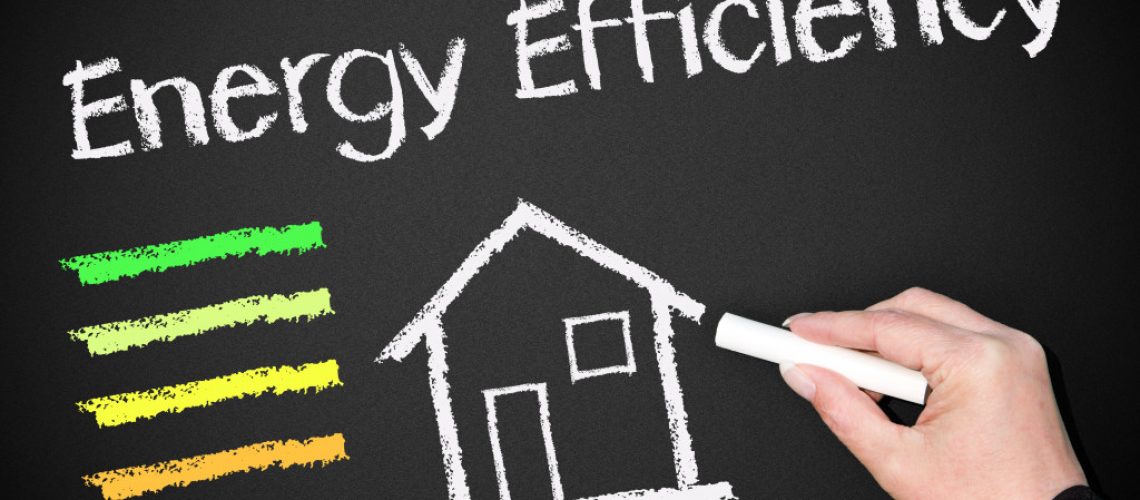- Upgrade to energy-efficient appliances for long-term savings and environmental impact.
- Mindful heating and cooling can significantly reduce your energy consumption.
- Proper insulation and sealing are essential for maintaining consistent temperatures and lowering HVAC strain.
- Harness natural light and embrace energy-efficient lighting to minimize electricity usage.
- Consider alternative energy sources, such as solar panels, for supplemental electricity.
In an era where sustainability is more crucial than ever, making your home energy-efficient is not only beneficial for reducing bills but also essential for lessening environmental impact. Every bit of effort towards sustainability counts, and your home is a great place to start.
Through mindful changes and investments, you can significantly reduce your home’s energy consumption while contributing to a larger global cause. Here are five practical tips to guide you in transforming your living space into an eco-friendly haven.
1. Upgrade to Energy-Efficient Appliances
Your journey towards an energy-efficient home begins with evaluating the devices you use daily. Household appliances, including refrigerators, washing machines, and dishwashers, can consume a surprising amount of energy. When it’s time to replace these items, opt for energy-efficient models. Look for products with Energy Star labels or other regional equivalents, as they meet rigorous energy efficiency standards.
It’s not just about choosing the right appliances, though. Be mindful of usage habits—like only running your dishwasher with a full load and regulating refrigerator temperatures—to optimize energy conservation. Though energy-efficient appliances might cost more upfront, the long-term savings on utility bills and the positive environmental impact make them a worthwhile investment.
2. Mind Your Heating and Cooling

A significant portion of home energy consumption goes into maintaining comfortable temperatures. Simple changes can result in substantial energy savings. Regular maintenance of your heating, ventilation, and air conditioning (HVAC) system ensures it operates efficiently and prevents energy wastage. This process includes cleaning or replacing filters regularly, checking for leaks, and timely professional servicing.
Consider a programmable thermostat, which allows precise control over your home’s temperature, ensuring the system isn’t overworking when it’s unnecessary, like when you’re away. During winter, rather than turning up the heat, layer up with warmer clothing and use insulating curtains. In contrast, summer calls for maximizing natural ventilation and using fans as a first line of defense against the heat, reserving air conditioning for peak temperatures.
3. Invest in Insulation and Sealing
Proper insulation is a cornerstone of energy efficiency, maintaining your home’s temperature and reducing the need for continuous heating or cooling. These efforts contribute to a consistent internal temperature, reducing the strain on your HVAC system and lowering energy consumption.
Here are some types of insulation and sealing that you can invest in:
Harness Natural Light
Maximizing natural light is an easy and effective way to reduce your home’s energy consumption. Not only does natural light offer numerous health benefits, but it also minimizes the need for artificial lighting during daytime hours.
Embrace Energy-Efficient Lighting
Lighting accounts for a significant portion of a home’s energy usage. Investing in energy-efficient bulbs like Light Emitting Diodes (LEDs) and Compact Fluorescent Lamps (CFLs) can significantly reduce your energy consumption for lighting.
Reduce Phantom Energy Use
Phantom energy use refers to the electricity that appliances consume even when not in use, merely by being plugged in. It’s estimated that phantom loads account for up to 10% of residential electricity usage, adding up to significant wasted energy and unnecessary bills.
Consider Alternative Energy Sources
Finally, consider alternative energy sources to supplement your home’s electricity usage. Solar panels are a popular choice and are becoming more affordable for homeowners looking to reduce their carbon footprint while saving on electricity bills.
4. Embrace Smart Lighting Solutions
Lighting, while essential, can consume far more energy than necessary if not managed efficiently. Transition to LED bulbs if you haven’t already; they use up to 75% less energy than traditional incandescent bulbs and last significantly longer. Complement this step by integrating smart lighting systems that allow automated control over your home’s lighting—enabling you to turn lights off during peak sunlight hours or dim them.
Remember, natural light is a free and mood-enhancing resource. Make the most of daylight by keeping windows clear during the day and strategically using mirrors to reflect light into darker areas of your home. This practice reduces your dependency on artificial light, saving energy in an effortless yet effective manner.
5. Enhance Window Efficiency

Windows is a critical area of focus when improving your home’s energy efficiency, often the weakest link in insulation. Beyond sealing gaps, consider the materials and treatments your windows have. Double or triple-pane windows provide an extra layer of insulation, which might be a worthy investment in colder climates.
Regarding treatments, a high-quality window solar shade is an excellent addition, particularly in warmer, sunnier locales. These shades block heat from entering your home, reducing your reliance on air conditioning. Moreover, they prevent harmful UV rays from fading interiors while maintaining your view of the outside. This balance between protection and natural light availability makes solar shades a savvy step towards greater home energy efficiency.
In Closing
Transforming your home into an energy-efficient entity involves conscientious decisions and investments to reduce your ecological footprint. By focusing on energy-efficient appliances, mindful heating and cooling, thorough insulation, smart lighting, and efficient window solutions, you’re not just cutting down expenses—you’re contributing to a global movement of conservation and environmental responsibility.
Each step, no matter how small it may seem, sets a precedent for a sustainable way of living that reverberates beyond the confines of your home. Embracing these changes represents a commitment not only to a responsible lifestyle but also to a healthier planet.

